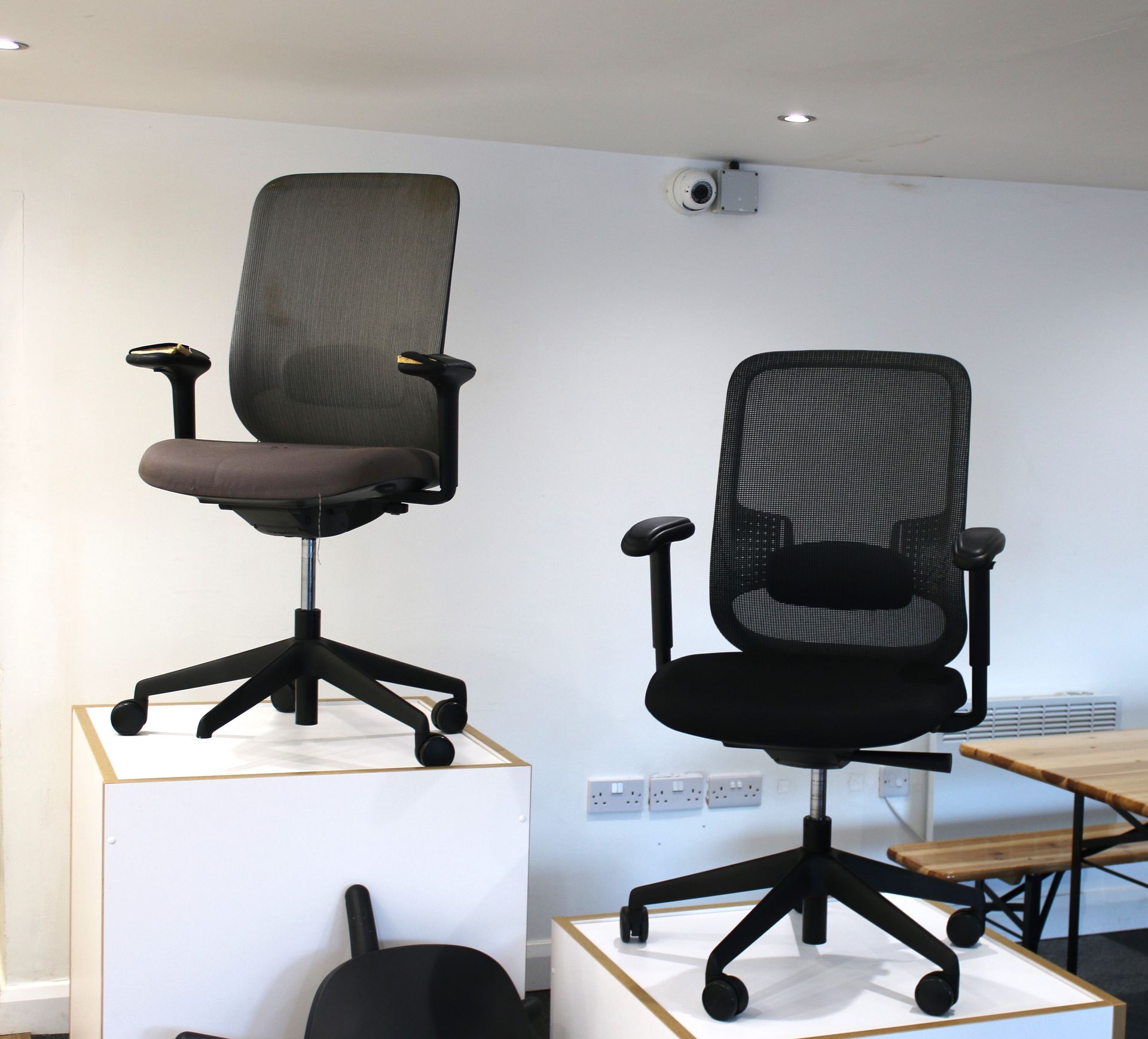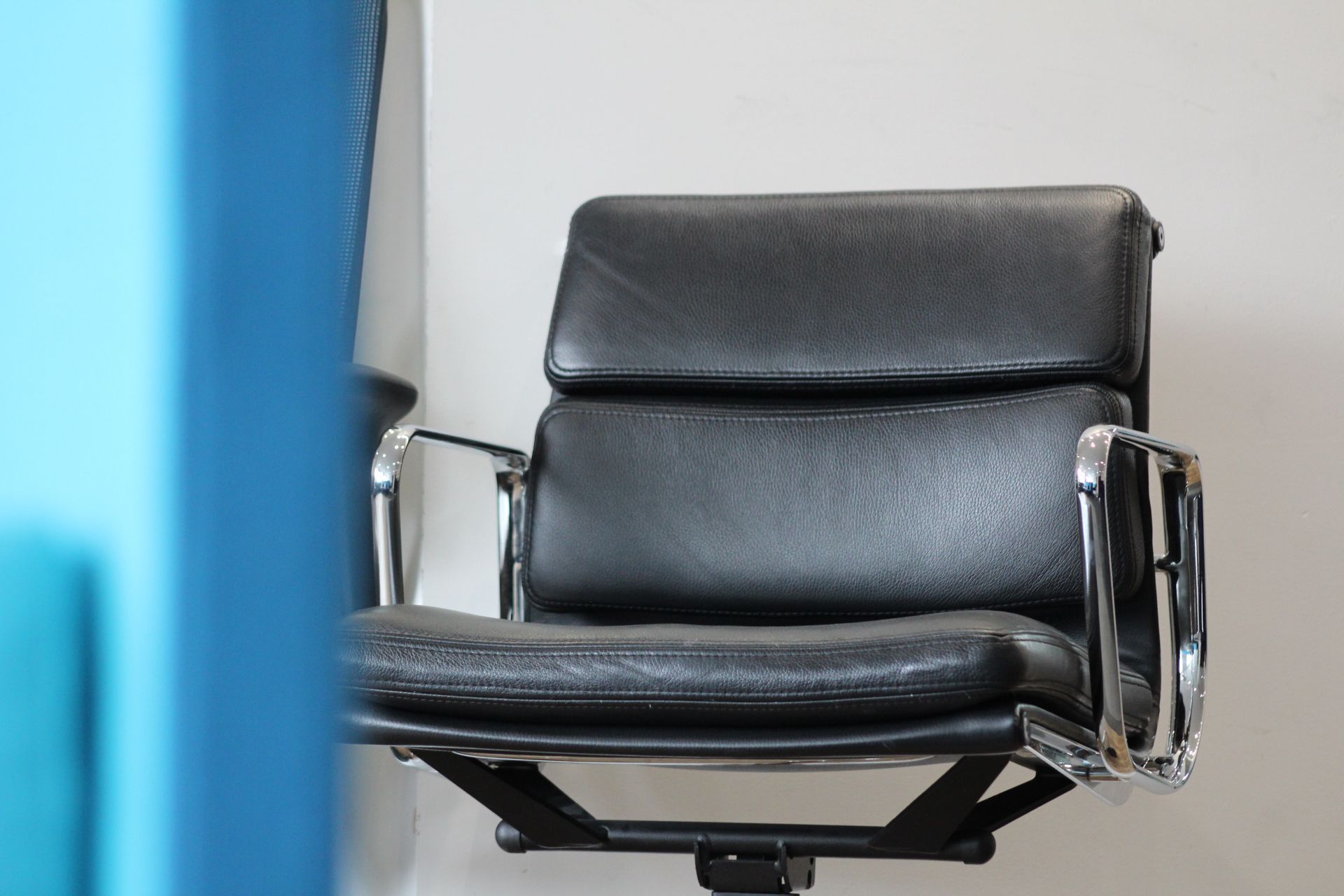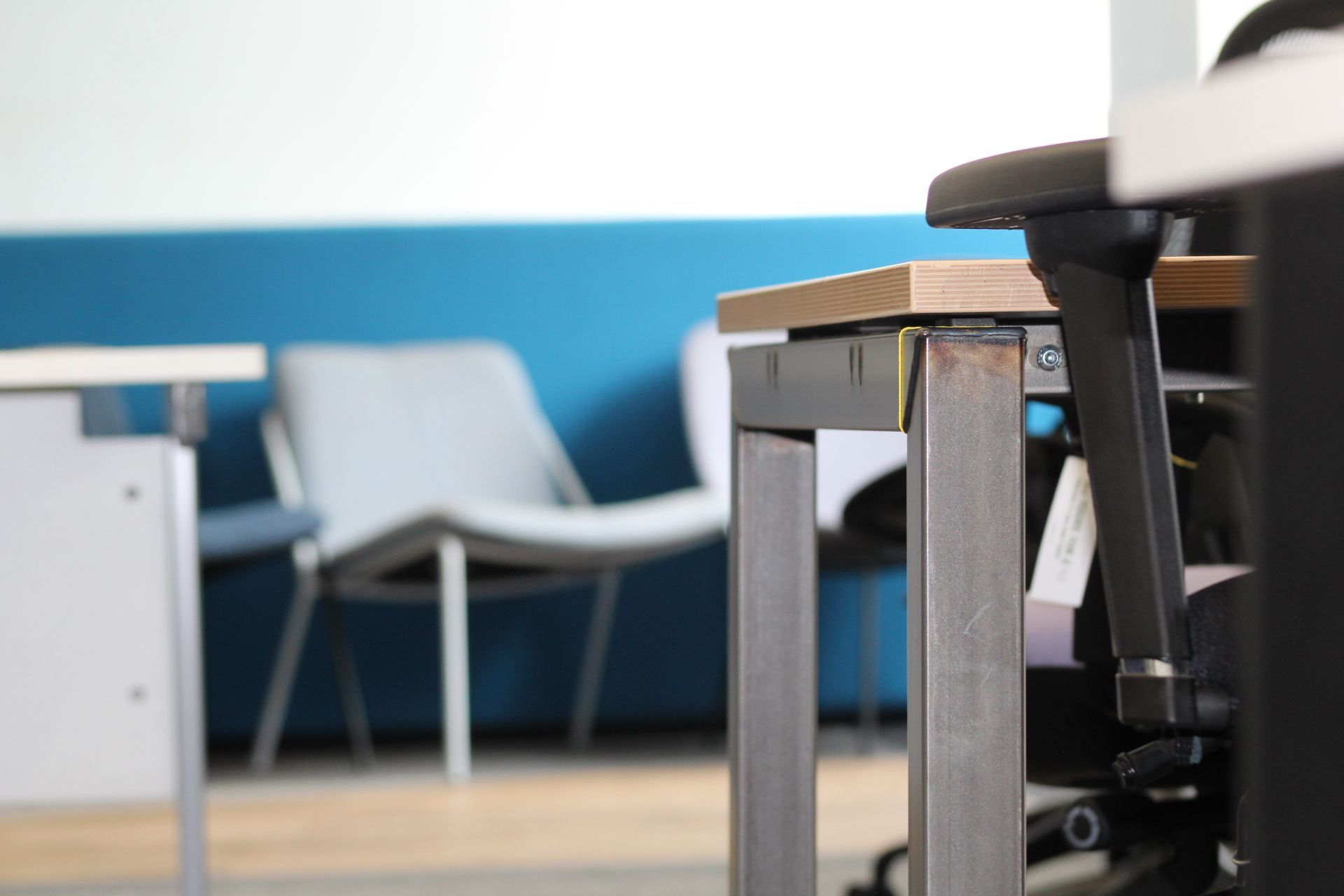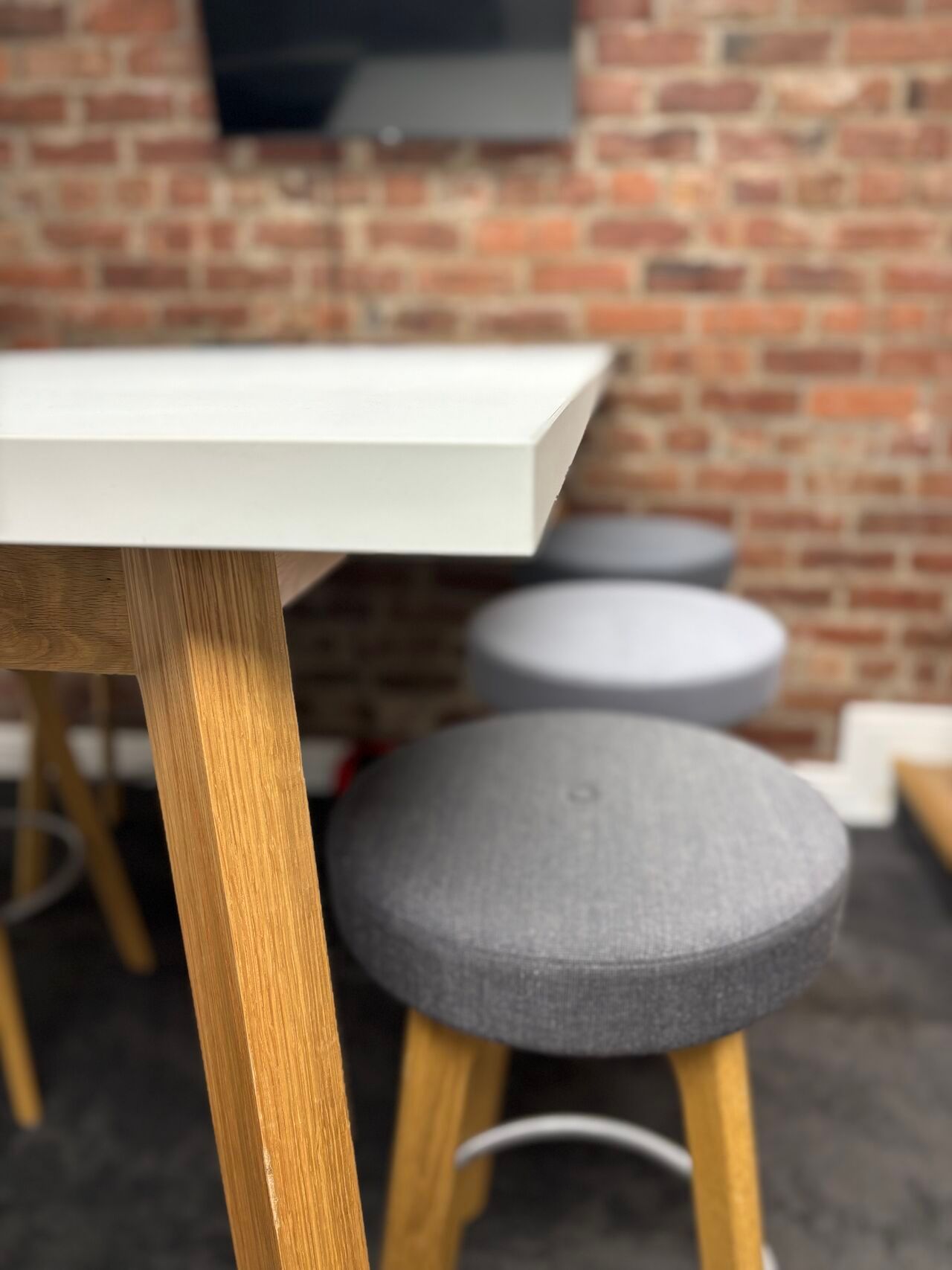Understanding the Circular Economy in Office Furniture: A Comprehensive Analysis
Did you know that the way we design, use, and dispose of old office furniture is at a crossroads? With growing environmental concerns, tightening regulations, and shifting corporate sustainability goals, businesses can no longer afford to overlook the impact of their office fit-outs. The traditional 'take-make-dispose' model is outdated - and it's costing you money.
Modern organisations are shifting toward a more sustainable model, one where office desks, chairs, and storage units are reused, refurbished, or recycled instead of ending up in landfills and polluting our environment.
This approach, called the
circular economy, is all about getting the most value out of materials while reducing waste and cutting carbon emissions.
Find out more about the circular economy and how it relates to your business
here.
But how does it actually work for your business?
Let's break it down.
Understanding the Carbon Footprint of Office Furniture
You might not realise just how much pollution comes from making office furniture. From production to disposal, every stage of a furniture item's lifecycle carries an immense environmental cost that affects your carbon footprint. Lifecycle assessments (LCAs) reveal that manufacturing, transportation, and disposal contribute largely to carbon emissions. To put this into perspective, here’s a look at the emissions created by some common office items:
- Chairs: Task chairs: 72 kg CO2e, Visitor chairs: 36 kg CO2e
- Desks: Standard desks: 45 kg CO2e, Bench desks for six: 228 kg CO2e
- Storage Units: Pedestals (MFC): 28 kg CO2e, Steel pedestals: 44 kg CO2e, Tambour storage: 50 kg CO2e, Cupboards: 31 kg CO2e
These numbers highlight why reusing, refurbishing, and recycling office furniture must become the industry standard! The carbon footprint of producing new office furniture is too high to ignore, making a circular approach both an environmental and financial imperative.
Want to see premium refurbished options that look just like new? Browse our
current inventory
of Herman Miller, Steelcase and more.
From Waste to Resource: How Used Office Furniture is Being Recycled
Traditionally, most office furniture gets thrown away when it’s no longer needed. But now, more and more businesses are finding ways to recover valuable materials and put them back into use. A circular economy means keeping materials in use for as long as possible. Moving towards closed-loop recycling ensures that second-hand office furniture components don’t end up in landfills.
Here's how key materials in your office furniture can be processed in a circular economy:
- Wood (MFC, MDF, solid wood): Often shredded for biomass fuel, though some high-quality MDF and plywood are repurposed.
- Plastics: Melted down and extruded into granules for new furniture components. The EU Circular Plastics Alliance is pushing to increase recycled plastic usage to 10 million tonnes by 2025.
- Foam, Fabric, Leather, Mesh: Difficult to recycle traditionally, often used as Refuse-Derived Fuel (RDF) for energy recovery.
- Metals (Steel, Aluminium): Among the most recyclable materials. Steel recycling alone reduces CO2 emissions by 58%.
As recycling requirements tighten, our blog explains exactly what you need to do to prepare for the 2025 Recycling Laws and ensure your office furniture disposal remains fully compliant.
Need to clear old office furniture from your office? Contact us today and let’s go through the details!
Designing Office Furniture That Lasts
One of the biggest shifts you can make is moving toward furniture that's built to be repaired, upgraded, and reused instead of replaced. To move away from disposable office furniture, manufacturers are rethinking design principles. The future is modular, adaptable, and built for longevity.
- Modular furniture → Think chairs that can be easily disassembled for repair, or desks with telescopic frames that adjust to new layouts instead of being discarded.
- Sustainable materials → Prioritising recyclable inputs like FSC-certified wood and biodegradable plastics while avoiding adhesives and mixed-material composites that complicate recycling.
- End-of-life planning→ Clear material labelling to improve recyclability and prioritising reuse before recycling.
Companies like Herman Miller are leading the way with take-back programs, where used office furniture is refurbished and resold instead of scrapped.
Looking for specific premium brands? Check out our
current inventory!
Office Furniture Refurbishment: A Smart and Sustainable Strategy
Office furniture refurbishment offers you an opportunity to extend the life of existing furniture rather than simply replacing it. Apart from the obvious environmental benefits, a circular approach makes financial sense for your bottom line.
Businesses that integrate refurbishment and reuse into their office fit-outs see:
- Cost savings: Refurbished furniture can cost you 30-50% less than buying new.
- Lower emissions: Choosing refurbished can cut your company’s furniture-related carbon footprint by up to 80%.
- Less Waste: Furniture storage and refurbishment during renovation projects prevent unnecessary disposal.
- Better Planning: Aligning refurbishment with fit-out timelines improves both cost efficiency and carbon savings.
And with government incentives increasingly rewarding carbon reduction initiatives, the economic argument for circularity is only getting stronger.
Ready to save money and cut carbon but wondering if refurbished office furniture will meet your needs?
This guide
walks you through the basics so you can decide if it's the smart choice for your office.

Cultural and Economic Shifts: A New Way to Think About Your Office Furniture
For decades, businesses treated office furniture as disposable-buy new, use it for a few years, then replace it. But mindsets are shifting. More companies now see furniture as an asset, not just an expense.
- Instead of focusing only on upfront costs, businesses are considering total cost of ownership (TCO), factoring in maintenance, refurbishment, and resale value.
- Corporate ESG (Environmental, Social, and Governance) goals are pushing companies to adopt sustainable models.
- B2B engagement is growing, with suppliers educating businesses on the financial and environmental benefits of circular furniture.
- Employee training is helping to create office cultures that value reuse, repair, and responsible disposal.
Get in touch with our team today to see how your office chairs and desks can save you money for years to come.
Industry Leadership and Policy Influence
The office furniture industry is now at a turning point. Manufacturers, refurbishers, and policymakers are actively contributing to a more sustainable future through:
- Best practice sharing & collaboration → Companies like Herman Miller’s Take-Back Programme are leading the way, repurposing used office furniture instead of sending it to landfill.
- Policy influence → Advocating for Extended Producer Responsibility (EPR), ensuring manufacturers take accountability for what happens to their products at the end of their lifecycle.
- Regulatory alignment → Businesses are adapting to frameworks like the EU Circular Economy Action Plan and the UK Net Zero Strategy, which push for lower carbon emissions and better resource management.

A Future Without Office Furniture Waste?
Shifting to a circular economy for your office furniture goes beyond recycling - it means rethinking how furniture is made, used, and repurposed in your workspace. A circular approach means keeping materials in use for as long as possible through refurbishment, reuse, and responsible disposal.
Your business can
cut costs,
reduce waste, and
lower your carbon footprint
all at the same time by extending the life of your office furniture.
Companies that move away from the cycle of constant replacement will stay ahead of regulations, save money, and create more sustainable workplaces. With better design and smarter planning, your office furniture can be more durable, adaptable, and resource-efficient.
The question is no longer
if companies should make this change, but
how soon.
What's Your Next Step Toward Sustainable Office Furniture?
Look around your workspace for a moment. Those desks and chairs aren't just furniture - they're opportunities to make smarter, more sustainable choices that reflect what your business stands for.
Every refurbished piece of office furniture saves money, cuts carbon, and tells clients and employees that you're serious about sustainability. It's a simple change that makes a massive difference - to your bottom line and to our shared environment.
When you're ready to explore how refurbished office furniture could work for your specific needs, our team at Coggin SOS is here with practical solutions that deliver both quality and value.
Get in touch when you're ready to take that next step toward furniture choices you can feel good about - financially and environmentally.




